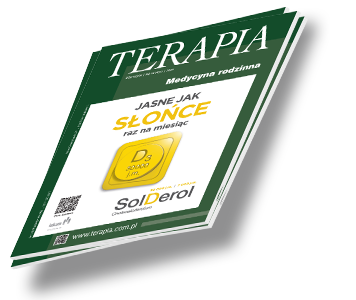W gabinecie lekarza rodzinnego Terapia 2018, 12 ( 371 ) : 70 - 77
Miejsce wapnia w terapii i suplementacji: od urodzenia do starości
The role of calcium in therapies and supplementation from birth to old age
Wapń to jeden z najistotniejszych składników mineralnych w organizmie. Jest elementem tworzącym tkankę kostną, stanowi 1–2% masy ciała, a ponadto odgrywa istotną rolę w wielu mechanizmach regulacyjnych ustroju i działaniu licznych enzymów, bierze udział w reakcjach antygen–przeciwciało, wiązaniu dopełniacza oraz produkcji insuliny. Przekazuje informację wewnątrzkomórkową i jest elementem układu krzepnięcia krwi. Współdziała w przewodnictwie nerwowym i procesach kurczliwości mięśni poprzecznie prążkowanych, ma działanie przeciwzapalne, przeciwalergiczne, przeciwwysiękowe i przeciwobrzękowe (1).

Zaloguj się i przeczytaj bezpłatnie całą treść artykułu.
Nie masz jeszcze konta dostępowego?
Zarejestruj się bezpłatnie, a otrzymasz:
* dostęp do wszystkich doniesień oraz pełnych tekstów artykułów naukowych w naszej Czytelni,
* prawo do bezpłatnego otrzymywania newslettera "Aktualności TERAPIA" z przeglądem interesujących i przydatnych wiadomości ze świata medycyny oraz systemu ochrony zdrowia w Polsce i na świecie,
* możliwość komentowania bieżących wydarzeń oraz udziału w ciekawych quizach i konkursach.
Zapraszamy serdecznie, dołącz do naszej społeczności.



Dodaj komentarz